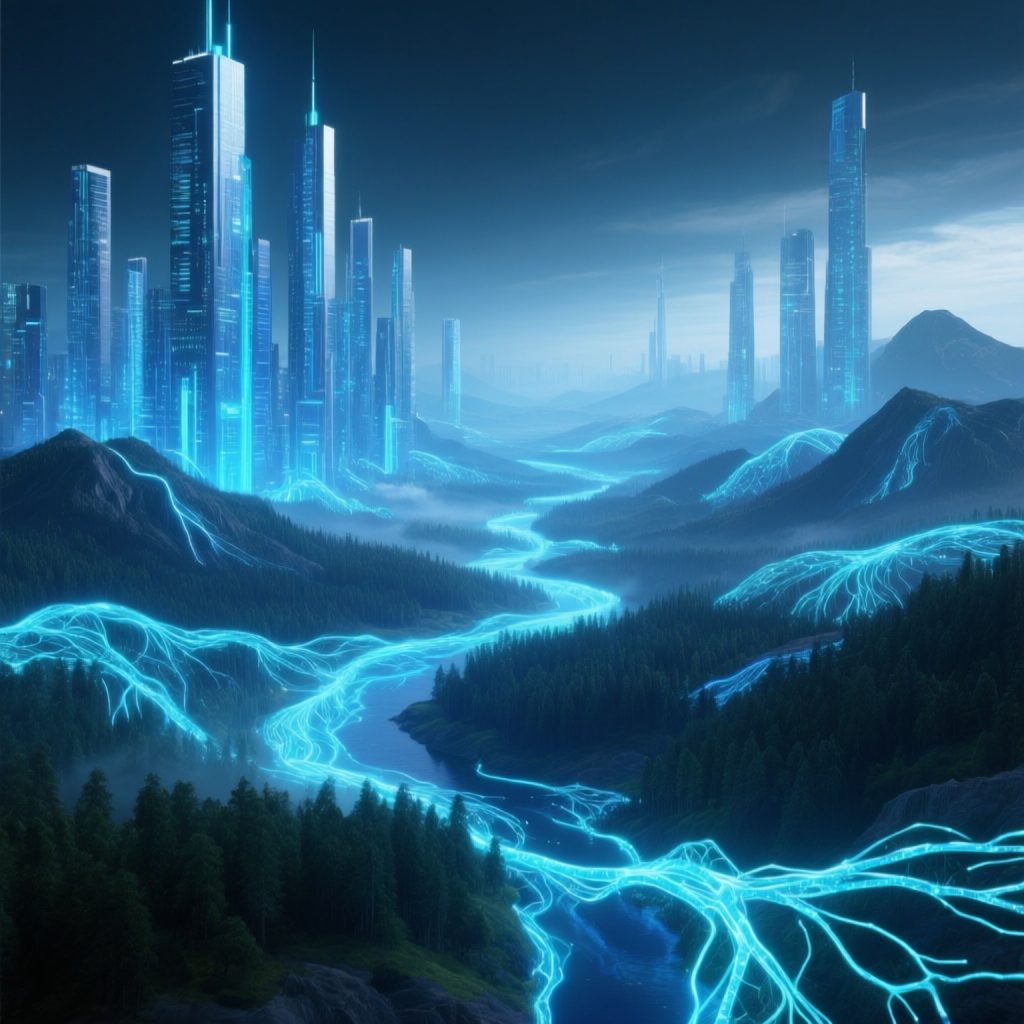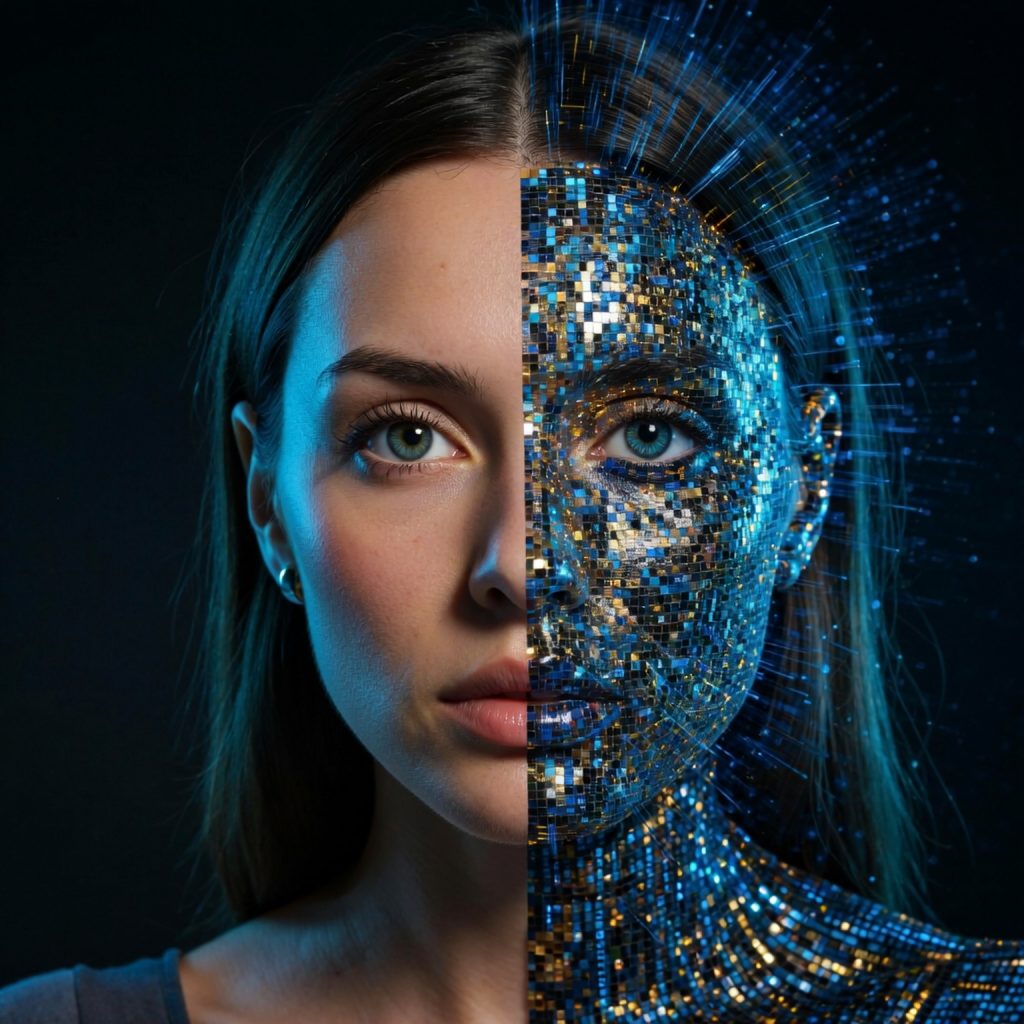Synthetic Reality: The Rise of AI-Generated Everything
A Story Begins in the Mirror of Tomorrow
It started with a photograph that never existed.
A travel blogger posted a breathtaking picture of herself standing under the aurora borealis in Iceland. The sky shimmered, the snow glowed, and thousands of hearts tapped “like.” Only one thing was missing, she had never been there.
That image was generated entirely by artificial intelligence.
A few years ago, we marveled at deepfakes and AI art as novelties. Today, we are surrounded by synthetic reality, a digital world where almost anything can be created, duplicated, or simulated by machine intelligence. From photorealistic videos to entire virtual worlds, AI has become the artist, the writer, and even the storyteller behind the curtain.
This is not science fiction. This is now.
What Is Synthetic Reality?
Synthetic reality refers to the creation of lifelike digital content, images, videos, voices, and even environments, produced by artificial intelligence rather than human hands. It blends deep learning, generative models, and massive datasets to simulate the “real” world so convincingly that the line between authentic and artificial fades.
At its heart are generative AI systems like GPT, Stable Diffusion, DALL-E, and Sora. These models don’t just copy, they create. They learn from millions of patterns and generate new, original content that looks, sounds, and feels real.
From Synthetic Voices to Virtual Humans
AI is no longer confined to laboratories. It speaks, sings, paints, and acts. Entire industries are being reshaped by synthetic creations.
| Domain | AI-Generated Example | Impact |
|---|---|---|
| Film & Media | Virtual actors and AI-crafted scripts | Reduces cost and production time |
| Marketing | Synthetic influencers on Instagram | 24/7 engagement without human fatigue |
| Gaming | Fully dynamic storylines and environments | Personalized player experiences |
| Education | AI-generated simulations for training | Safer, immersive learning |
| Fashion | AI-designed clothing and digital models | Sustainable virtual fashion shows |
These examples are not glimpses of the future, they are headlines from today.
The Emotional Power of Synthetic Creation
Synthetic content doesn’t just imitate, it connects. A virtual singer can move millions. A digital spokesperson can inspire trust. AI art can evoke emotion we can’t quite explain.
But the emotional bond comes with complexity. When people cannot distinguish reality from simulation, what happens to authenticity? Are emotions less genuine when triggered by something artificial?
The paradox is poetic: the more convincing our simulations become, the more we question what “real” truly means.

Read More: What Is Neuromorphic Computing?
Chart: The Growth of AI-Generated Content (2020-2025)
(Description of visual content for text readers: imagine a smooth upward line on a simple chart showing steady growth from 2020 to 2025.)
| Year | Estimated % of Online Content Created by AI |
|---|---|
| 2020 | 3% |
| 2021 | 8% |
| 2022 | 17% |
| 2023 | 33% |
| 2024 | 52% |
| 2025 | 70% (projected) |
The numbers tell a story of acceleration. In less than a decade, most of what we see online may not come from a human at all.
Why Synthetic Reality Matters
1. Creativity Unleashed
AI tools have opened creative doors that were once locked. Artists, filmmakers, and writers can collaborate with algorithms to explore ideas faster and deeper.
2. Accessibility for All
Creating high-quality media used to require expensive tools and teams. Now anyone with a laptop can generate professional-level content.
3. New Economies Emerging
Virtual influencers, digital assets, and AI-driven art markets are forming a multibillion-dollar ecosystem. Creativity itself has become programmable capital.
The Shadow Side of a Synthetic World
The same power that fuels innovation can also breed confusion. Fake news, identity theft, and manipulated media have become weapons in the wrong hands. Synthetic reality can erode trust if we lose our grip on verification.
Ethical Dilemmas
- Who owns AI-generated content?
- Should synthetic people have rights?
- How can we trace what is “real” online?
The answers are still forming, but one thing is clear: society must evolve digital literacy alongside technology.
How to Navigate Synthetic Reality Wisely
- Be Curious, Not Fearful
Learn how AI works. Understanding demystifies its power. - Verify Sources
Use reverse image search and metadata tools before sharing viral content. - Support Transparency
Encourage creators to label AI-generated works. - Balance Creation and Caution
Experiment with AI tools responsibly, innovation thrives on mindful creativity.

Read More: The future of flight: Can AI make flying sustainable?
FAQs About Synthetic Reality
Q1: Can AI-generated content replace human creativity?
No. AI can amplify and accelerate creativity, but human imagination and emotional depth remain the foundation of meaningful creation.
Q2: Is synthetic reality dangerous?
It can be, if used maliciously. However, when guided by ethics and transparency, it can become a powerful tool for storytelling, education, and design.
Q3: How can I tell if something is AI-generated?
Look for subtle inconsistencies, unnatural lighting, repetitive language patterns, or metadata clues. Advanced detection tools are emerging to help verify authenticity.
Q4: What industries will benefit most from synthetic content?
Media, marketing, gaming, healthcare, and education are already reaping the benefits, with personalized and cost-effective content creation.
Q5: What is the future of synthetic reality?
We are moving toward hybrid worlds, where synthetic and physical realities coexist seamlessly. The goal is not to replace reality but to expand it.
Conclusion: The Human Within the Synthetic
Synthetic reality is not the end of authenticity, it is the next chapter of human expression. Every image, voice, or simulation created by AI reflects our own imagination mirrored back through code.
The rise of AI-generated everything challenges us to redefine what is genuine, meaningful, and creative. But at its core, it reminds us of something profoundly human: our endless desire to create, to imagine, and to believe in what we see, even when it’s born from silicon rather than skin.
The world ahead will not be fully real or fully artificial. It will be synthetically human, a fusion of art, data, and dreams.



